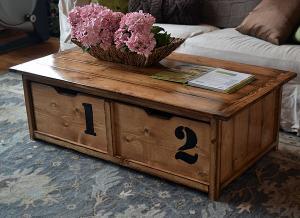
This coffee table features a huge trundle drawer that can be used to store blankets, pillows, or act as a toybox!
This is a free woodworking plan with step by step diagrams, shopping and cut list - everything you need to build your own coffee table with trundle drawer.
Pin for Later!
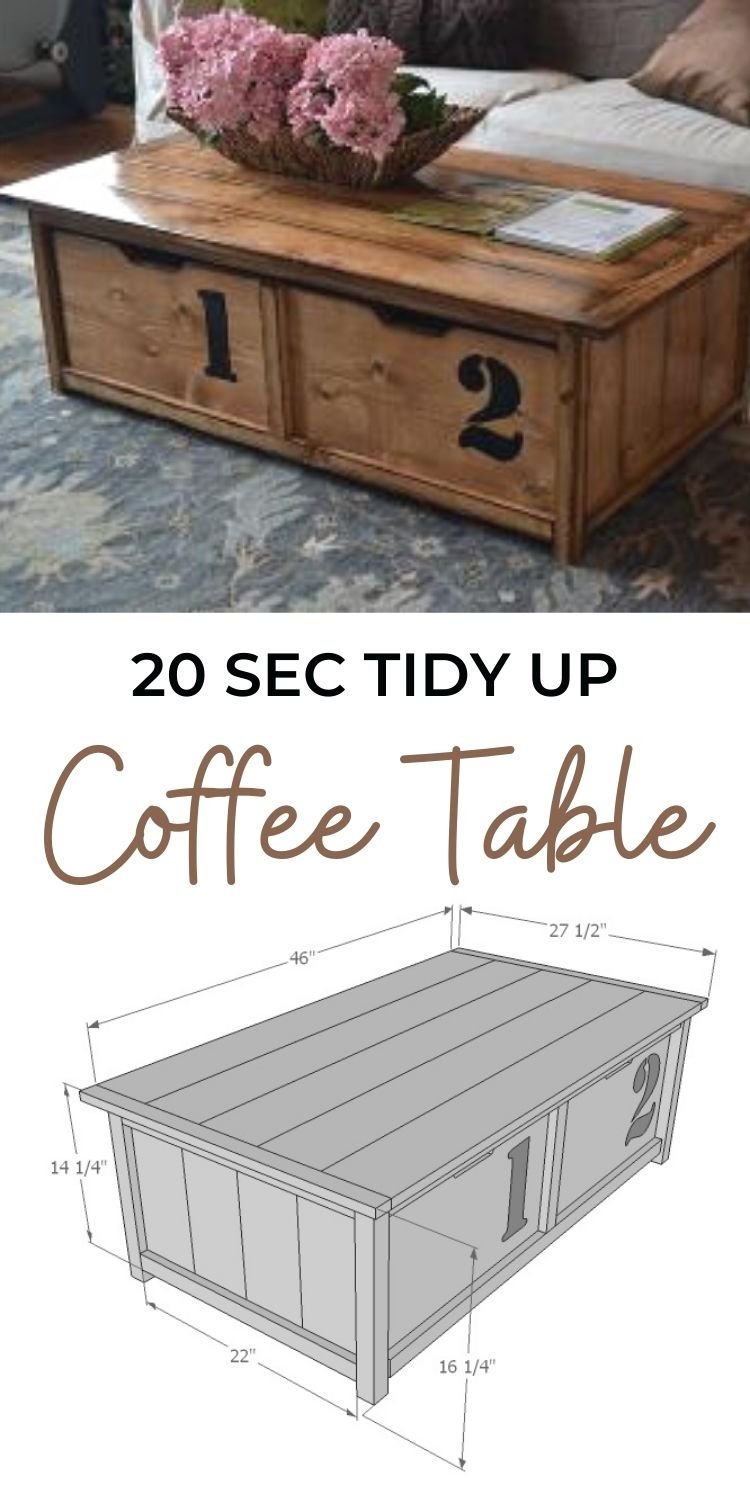
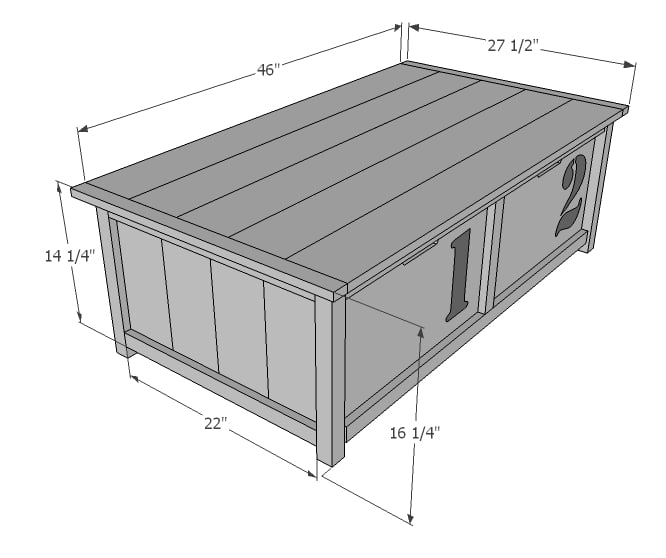
Preparation
- 4 - 1x6 @ 8 feet long
- 3 - 2x2 @ 8 feet long
- 1 - 1x3 @ 6 feet long
- 1 - 1x12 @ 12 feet long
- 1 - 1x2 @ 10 feet long
- 1/4 sheet of - 1/2" plywood
- 4 - 1 1/2" caster wheels with an overall clearance of 2"
- 4 - 2x2 @ 21 3/4" (cut to length of your leg sides)
- 2 - 2x2 @ 43 1/2"
- 5 - 1x6 @ 45"
- 8 - 1x6 @ 14 1/4"
- 4 - 1x2 @ 22" (side trim - cut to fit)
- 2 - 2x2 @ 15 1/2" (for caster wheels with overall clearance of 2" - most commonly 1 1/2" diameter wheels)
- 2 - 1x3 @ 27 1/2" (cut to width of tabletop)
TRUNDLE
- 2 - 1x12 @ 43"
- 2 - 1x12 @ 23 1/4" (1/4" less in length than the side trim)
- 2 - 1x2 @ 43"
- 2 - 1x2 cut to fit most likely around 11" 1/2" plywood cut to fit bottom
Please read through the entire plan and all comments before beginning this project. It is also advisable to review the Getting Started Section. Take all necessary precautions to build safely and smartly. Work on a clean level surface, free of imperfections or debris. Always use straight boards. Check for square after each step. Always predrill holes before attaching with screws. Use glue with finish nails for a stronger hold. Wipe excess glue off bare wood for stained projects, as dried glue will not take stain. Be safe, have fun, and ask for help if you need it. Good luck!
Instructions
Step 1
There's a number of different ways you can go about putting this pretty simple coffee table together. I actually put mine together in a different set of steps: I first built the top, then the leg sides, then added the top to leg sides, followed by trundle construction. But what happened is this table is highly dependent on the tabletop as the main structure, and I had some not quite straight tabletop boards. This created a ton of problems for me, so I wanted to present these plans in a different order to help alleviate issues for you.
If you have straight boards and a Kreg Jig, it may make the most sense to just build the tabletop, build the leg sides, the frame, and the trundle, and then put the pieces together.
Either way we go, let's build those sides first. Because 1x6 boards can be a little "off" and end up changing overall widths, cut the trim pieces to match the width of four 1x6s as shown above. Nail and glue on.
TIP: for pocket hole jig users, also join center of each 1x6 to neighboring 1x6 edge to edge.
Step 2
Step 3
Now we will build the 2x2 frame. Remember, because the sides can vary ever so slightly in widths, you will want to build the 2x2 frame to the same width as the sides. Easiest way? Cut the 2x2 supports to the same length you cut the side trim too.
It's super important to use straight 2x2s and build the frame square, so take your time here and get it right. Because the trundle basically acts like one big drawer, it's exceptionally important that the table is square so we don't have on giant cockeyed drawer that sticks. Ugh!
Step 4
Step 6
Step 7
Step 8
It is always recommended to apply a test coat on a hidden area or scrap piece to ensure color evenness and adhesion. Use primer or wood conditioner as needed.



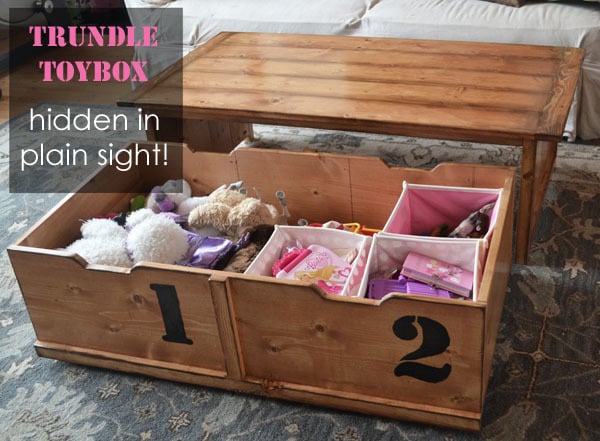
















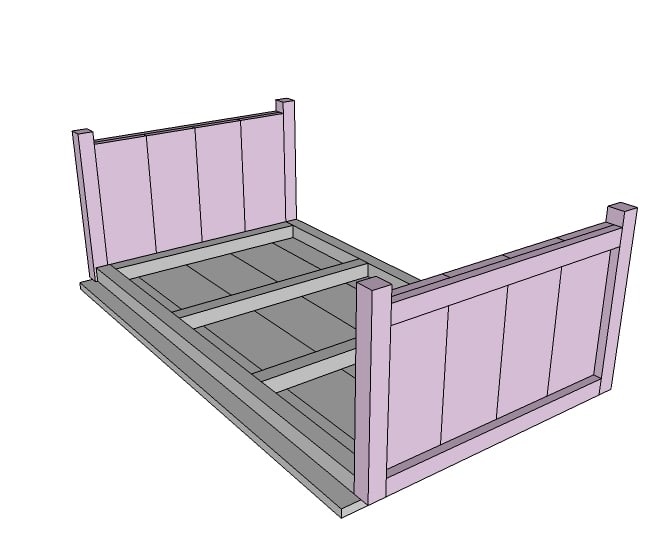
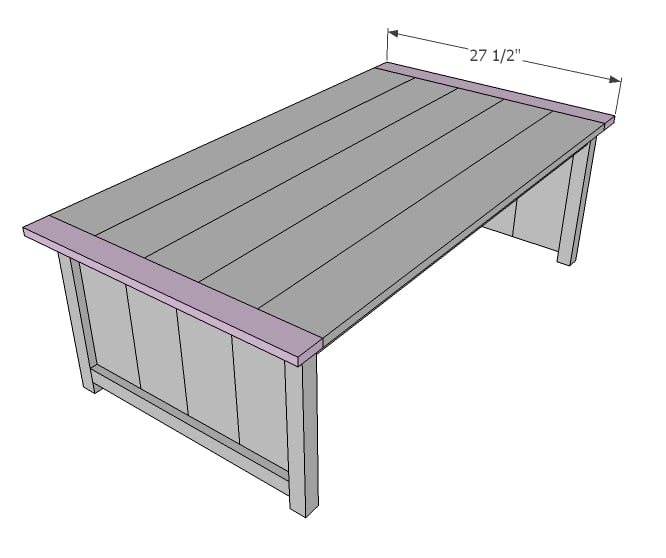
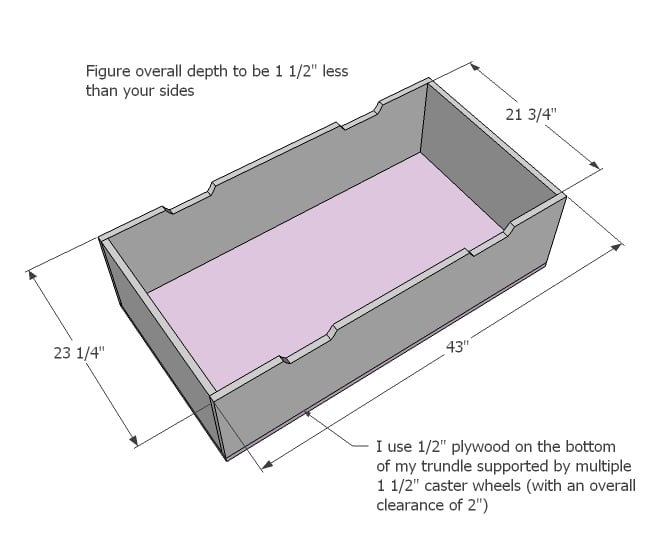



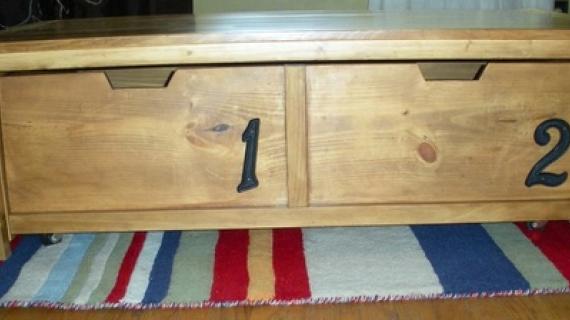

Comments
GuitarEng
Tue, 09/29/2015 - 14:39
Attaching leg sides - Step 5
Ana, how did you attach the leg sides on Step 5, or how do you recommend this to be done. Thanks!